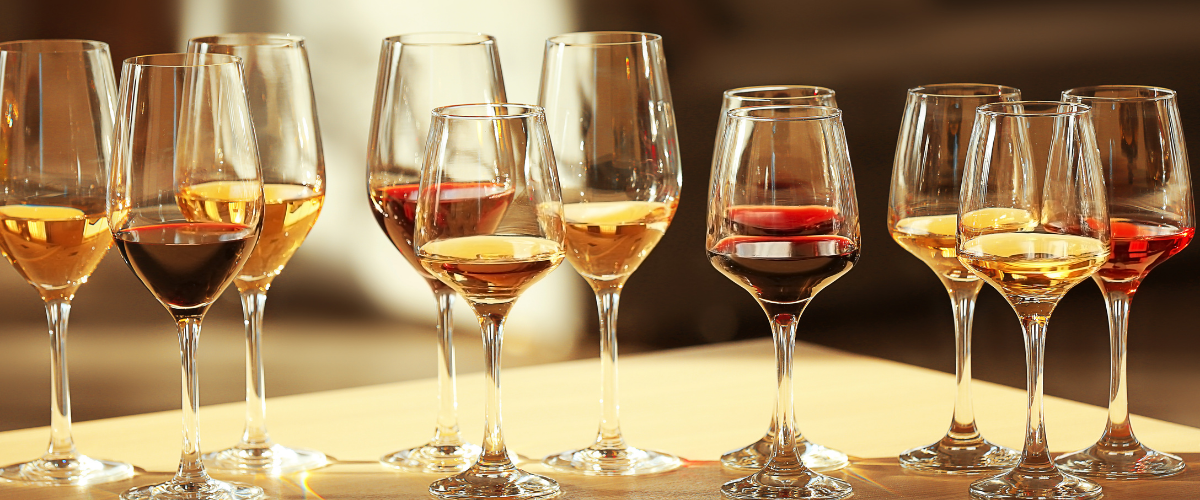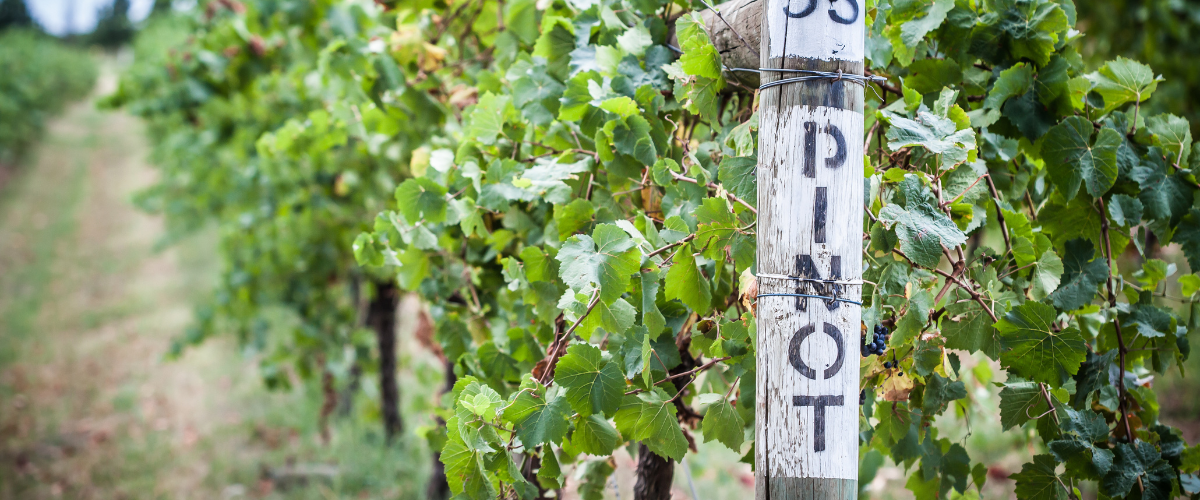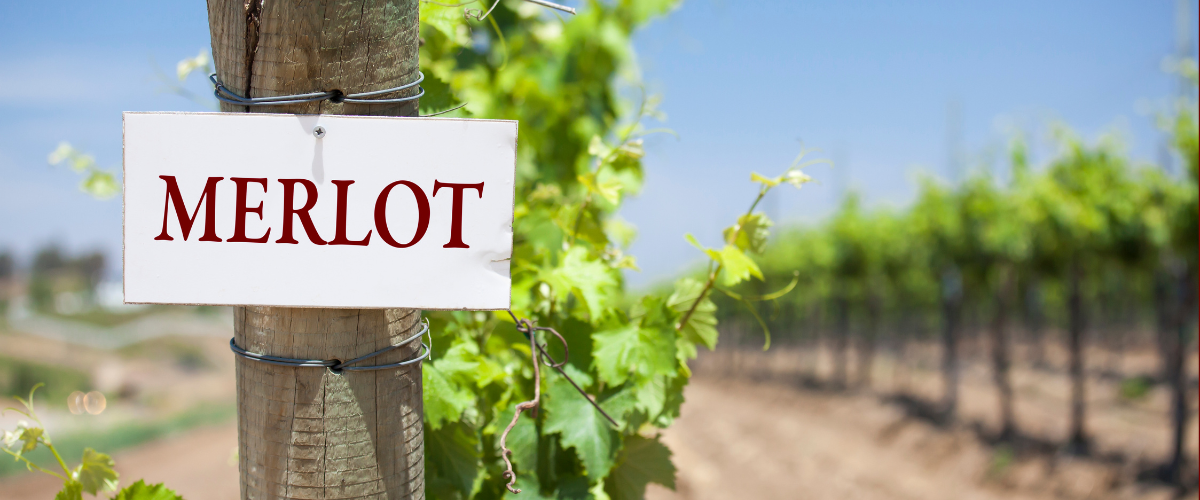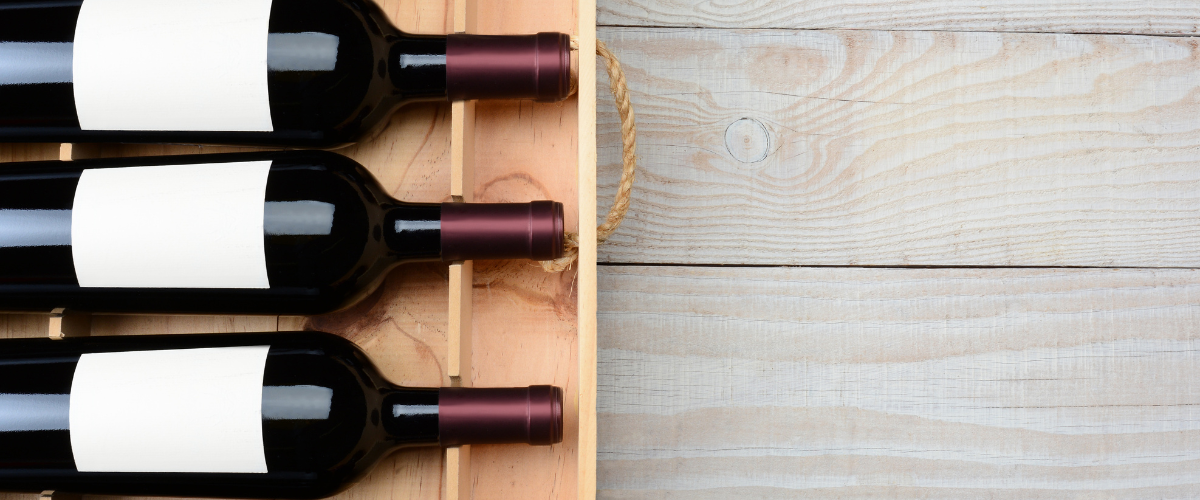If You Like This, Drink That

Explore new wines, within your favourite wine style.
by Erin Henderson
We don’t eat the same thing every day, we don’t wear the same thing every day, heck, some of us don’t even wake up to the same person every day.
So why should we drink the same wine every day?
Sure, we all have our favourites, the bottles we return to again and again. We know what to expect, we know we like them, we know they go well with the foods we like. But sometimes, understandably, boredom can set in.
So what’s a cautious wine lover to do when searching for a new tipple, yet unsure of what will satisfy the senses? My recommendation is not to abandon ship and go to extremes. If you’re a delicate Pinot Noir fan, diving headlong into a brawny Shiraz might end in disappointment. Instead, it might be wiser to try different grapes, but in the same style category you know you enjoy.
You may also like: How to Taste Wine
 Pinot Grigio
Pinot Grigio
Everyone loves a Pinot Grigio, even those who swear they don’t. And what’s to dislike? Lean, crisp, and neutral, PG is like the LBD of wines: it goes with everything at any time. It’s maximum appeal for the smallest risk.
Obvious food pairings for light, bright, fresh white wines is shellfish of any kind, from raw oysters to seared scallops to fritto misto and fish and chips. Other matches include fish, creamy gnocchi, spring vegetable risotto, veal scallopini, or pasta with pesto sauce.
Similar styles:
Assyrtiko – a Greek wine most popularly from the sea-sprayed island of Santorini. Lean and fresh with citrus, mineral and saline flavours.
Soave – Like many European wines Soave is the same of the region not the grape. It’s located in the Veneto, about an hour or so drive northwest of Venice. Made from the Garganega grape it has crisp acid, and medium to light body, with delicate flavours of citrus zest, melon, faint herb, and mineral salt.
Pecorino – Another Italian white wine, this has delicate flavours of peach and stone fruit, a touch of floral blossom, and lime.

Sauvignon Blanc
Bright and aromatic with notes of grapefruit, gooseberry, kiwi, asparagus, herbs and mineral, these wines are deeply flavoured but still offer lip-smacking freshness. Supremely popular, especially for warm weather sipping.
Aromatic, medium bodied wines, with loads of acidity and distinctive herbal flavours, work particularly well with salads and vinaigrettes, goat cheese, and highly flavourful Thai and Vietnamese dishes.
Similar styles:
Verdejo – Hailing from Rueda, Spain, Verdejo is known for its green, savoury flavours along with lemon and orange and almond notes.
Chenin Blanc – Chenin Blanc can range from dry to sweet and even sparkling wine. Dry Chenin, from France’s Loire Valley or South Africa, bursts with a mix of orchard and stone fruit, and tons of mouth-watering acidity.
Albariño – This lean, white, flavourful grape comes from the Rias Baixas in southwest Spain, just above Portugal (where it’s known as Alvarinho). These are exciting wines with lots of appeal.

Chardonnay
Chardonnay is a bit of a moving target: ranging from the poised, steely styles of Chablis to the rich and unctuous barrel-fermented and aged versions, Chardonnay truly has something for everyone (which often surprises new wine enthusiasts.)
You may also like: What's the Difference Between Petit Chablis and Chablis?
If you fall in the camp of the former, wine styles like Assyrtiko and Soave, listed above, will likely please you. If you are someone who luxuriates in the decadent camp of the latter, full bodied wines with creamy texture and tropical fruit flavours will tickle your fancy.
These wines have the substance and structure to work with roast poultry and game bird, ham, especially when cooked with apples and fruit, lobster and richly prepared seafood, pasta carbonara or creamy pastas.
Similar styles:
Marsanne – Often blended with Rousanne and Viognier, Marsanne is found most commonly in the Northern Rhône and tastes of quince paste and kumquat, yellow pear, white flowers and a hint of honey.
Arneis – A rich white wine from the Roero wine region in Piedmont, Arneis is typically pale gold, with silky texture and medium to full bodied. Flavours of toasted hazelnut, brown butter, poached pear and apricot, make up this complex and intriguing wine.
Pinot Gris – Pinot Gris, the alter ego to Pinot Grigio, can be tricky as it ranges from bone dry to Icewine sweet. In either style, it has rich floral and stone fruit flavours, slight ginger and white pepper spice, and tangerine.
Pinot Noir
Light bodied, with fine tannin and bright acid and the flavour of red berries, earthy spice and a slight savoury note, these wines are the styles over which wine enthusiasts get all dreamy.
Wines of this style are perhaps the most food friendly reds, pairing well with everything from oily fish like salmon, to light red meats such as filet mignon and prime rib, roast and stewed chicken, as well lentil dal, ratatouille, and eggplant involtini.
Similar styles:
Gamay – A kissing cousin to Pinot Noir, Gamay is the grape of Beaujolais and the second red grape of Burgundy. Bright red fruits, ripe black berries, pepper spice and earthy flavours all make up the Gamay profile.
Tempranillo – The main red grape of Spain, Tempranillo can range in flavour profiles and structures, but has an intriguing blend of red fruits, smoke, and spice. Lighter, Crianza level styles show upfront fruit, while those belonging to the brooding, Gran Reserva tier develop more leather, meaty, spicy character.
Frappato – A darling of Sicily, Frappato is translucent ruby in colour and bursts with sweet red berries, smoky incense, and tart cherry and pomegranate.
You may also like: What's the Difference Between Acid and Tannin?
Merlot
Merlot is a chameleon. Depending on the producer, wine region, and vintage, Merlot can be as powerful and dark as Cabernet, or as light and ruby red as Pinot Noir. Taking the middle road, Merlot is often filled with upfront cherry-fruit, medium body, and soft tannins.
Food pairings for these reds include pastas with red sauces, sausage and beef ragus, liver, cheese and mushroom pizza, rabbit paella, grilled tuna with olives.
Similar styles:
Sangiovese – the red grape of Tuscany that makes the famed Chianti, Sangiovese is a gorgeous blend of tart red cherry fruit and savoury, earthy flavours, like sundried black olives, wild herb like thyme or rosemary, and leather.
Côtes du Rhône – Typically some sort of blend between Syrah, Mourvèdre, and Grenache (though 21 different varietals are permitted in the blend), these are approachable, juicy, mid-weight reds made for immediate enjoyment. Flavours include blackberries and plums, black pepper and anise spice, and a touch of floral.
Valpolicella – The northern Italian wine growing region of Valpolicella creates red blends made of indigenous grapes Corvina, Corvinone, Rondinella, and Molinara for straight forward wines of juicy red fruit, cherry, raspberry and strawberry. Tannins are so smooth they’re almost not there and the acidity is bright and fresh. (This is not to confuse basic Valpolicella with its more muscular siblings, Ripasso, or even Superiore, which have considerably more heft.)
Cabernet Sauvignon
Ah, the King of Wines.
Everyone loves a Cab, and Cab, indeed, loves everyone back. You will find plantings all over the world, so it’s tough to pinpoint the exact and only flavour profile. However, generally speaking, Cabs from cooler and more moderate climates such as Bordeaux, taste of savoury black currant leaves, fig, tobacco, pencil led, and fresh asphalt. Warmer climates, such as Napa Valley produce much more voluptuous and fruity reds with jammy black cherry and blackberry, and often oaky notes of vanilla or mocha. Bottom line, Cabs are powerful and dark, usually with firm tannin, higher alcohol and moderate acidity.
Food pairings generally swirl around meat, everything from grilled steak to braised beef, but that’s not to exclude vegetarian or plant-based dishes. Eggplant parmesan, porcini mushrooms with rosemary, black lentils with charred or smoked root vegetables can all work, as well.
Similar styles:
Primitivo – Deeply saturated purple and incredibly powerful, Primitivo is found in Italy’s hot south, in Puglia. Tannic and rich, with ripe black fruit and spice flavours.
Touriga Nacional – the leading red grape in Portugal, especially in blends for Port, this Touriga Nacional is inky and dark with flavours of black fruits, pepper, purple flowers, new leather and earth. Firm and powerful tannins help give this grape excellent potential for cellaring.
Nero d’Avola – Filled with plum and spice flavours, Nero d’Avola is an important grape in Sicilian wine making. Densely saturated in colour with bold tannins, it’s an intensely focused and concentrated wine.
Your next read: The Best Serving Temperatures for Wine




